
https://ebookmass.com/product/etextbook-978-9351500827-
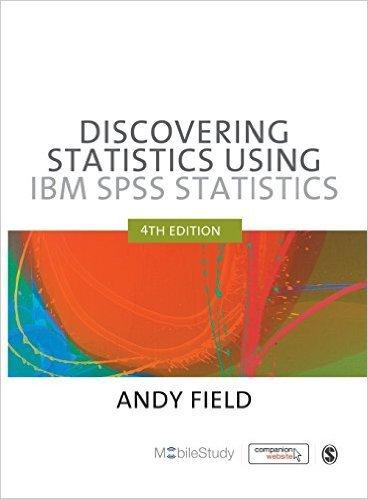
Instant digital products (PDF, ePub, MOBI) ready for you
Download now and discover formats that fit your needs...
Discovering Statistics Using IBM SPSS Statistics: North American Edition 5th Edition, (Ebook PDF)
https://ebookmass.com/product/discovering-statistics-using-ibm-spssstatistics-north-american-edition-5th-edition-ebook-pdf/
ebookmass.com
Statistics Using IBM SPSS: An Integrative Approach – Ebook PDF Version
https://ebookmass.com/product/statistics-using-ibm-spss-anintegrative-approach-ebook-pdf-version/
ebookmass.com
Using IBM SPSS Statistics: An Interactive Hands On Approach 3rd Edition, (Ebook PDF)
https://ebookmass.com/product/using-ibm-spss-statistics-aninteractive-hands-on-approach-3rd-edition-ebook-pdf/
ebookmass.com
Derivatives Wendy L. Pirie
https://ebookmass.com/product/derivatives-wendy-l-pirie/
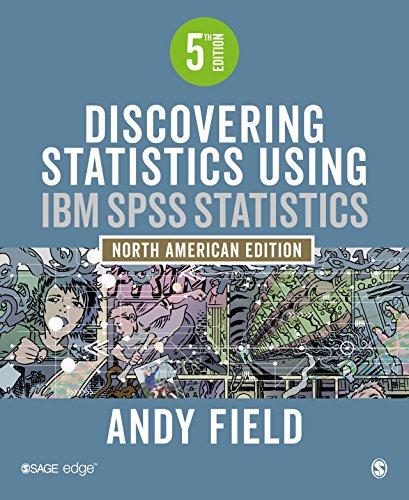
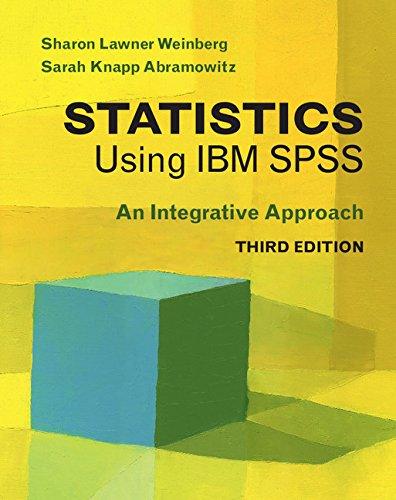
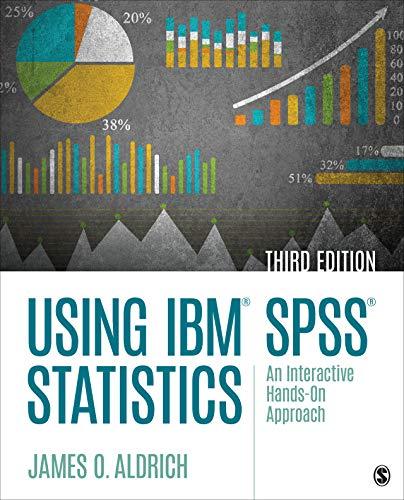
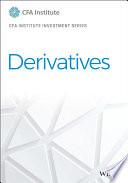
ebookmass.com
The Oxford Handbook of Daniel Defoe (Oxford Handbooks) Seager
https://ebookmass.com/product/the-oxford-handbook-of-daniel-defoeoxford-handbooks-seager/
ebookmass.com
AACN Core Curriculum for High Acuity, Progressive and Critical Care Nursing E Book 7th Edition, (Ebook PDF)
https://ebookmass.com/product/aacn-core-curriculum-for-high-acuityprogressive-and-critical-care-nursing-e-book-7th-edition-ebook-pdf/
ebookmass.com
Fearless Katie Golding
https://ebookmass.com/product/fearless-katie-golding-2/
ebookmass.com
Intercultural Communication in Contexts 8th Edition Judith Martin
https://ebookmass.com/product/intercultural-communication-incontexts-8th-edition-judith-martin/
ebookmass.com
Echocardiography Review Guide: Companion to the Textbook of Clinical Echocardiography 4th Edition Catherine M. Otto Md
https://ebookmass.com/product/echocardiography-review-guide-companionto-the-textbook-of-clinical-echocardiography-4th-edition-catherine-motto-md/
ebookmass.com

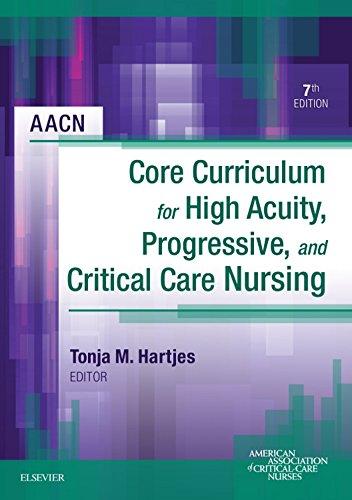


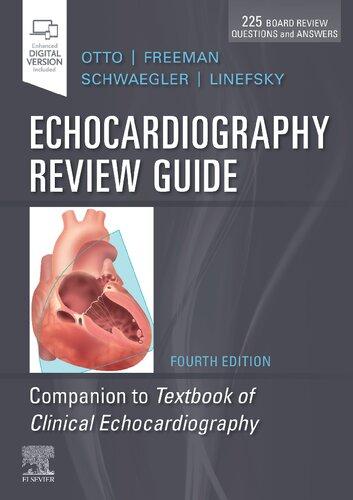
Filter Technologies for Filtration of Submicron Aerosols and Nanoaerosols 1st Edition Wallace Woon-Fong Leung
https://ebookmass.com/product/nanofiber-filter-technologies-forfiltration-of-submicron-aerosols-and-nanoaerosols-1st-edition-wallacewoon-fong-leung/
ebookmass.com

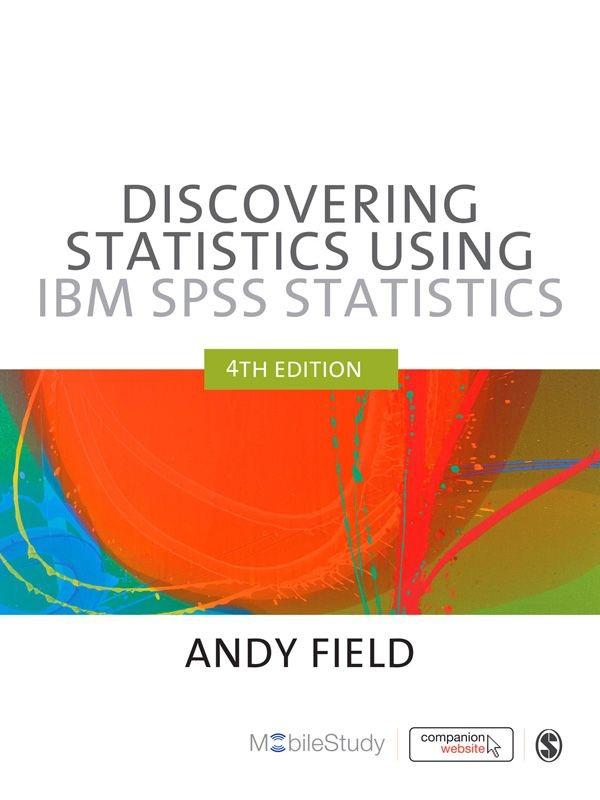
2 Everything you never wanted to know about statistics
2.1. What will this chapter tell me? ①
2.2. Building statistical models ①
2.3. Populations and samples ①
2.4. Statistical models ①
2.4.1. The mean as a statistical model ①
2.4.2. Assessing the fit of a model: sums of squares and variance revisited ①
2.4.3. Estimating parameters ①
2.5. Going beyond the data ①
2.5.1. The standard error ①
2.5.2. Confidence intervals ②
2.6. Using statistical models to test research questions ①
2.6.1. Null hypothesis significance testing ①
2.6.2. Problems with NHST ②
2.7. Modern approaches to theory testing ②
2.7.1. Effect sizes ②
2.7.2. Meta-analysis ②
2.8. Reporting statistical models ②
2.9. Brian’s attempt to woo Jane ①
2.10. What next? ①
2.11. Key terms that I’ve discovered 2.12. Smart Alex’s tasks
2.13. Further reading
3 The IBM SPSS Statistics environment
3.1. What will this chapter tell me? ①
3.2. Versions of IBM SPSS Statistics ①
3.3. Windows versus MacOS ①
3.4. Getting started ①
3.5. The data editor ①
3.5.1. Entering data into the data editor ①
3.5.2. The variable view ①
3.5.3. Missing values ①
3.6. Importing data ①
3.7. The SPSS viewer ①
3.8. Exporting SPSS output ①
3.9. The syntax editor ③
3.10. Saving files ①
3.11. Retrieving a file ①
3.12. Brian’s attempt to woo Jane ①
3.13. What next? ①
3.14. Key terms that I’ve discovered
3.15. Smart Alex’s tasks
3.16. Further reading
4 Exploring data with graphs
4.1. What will this chapter tell me? ①
4.2. The art of presenting data ①
4.2.1. What makes a good graph? ①
4.2.2. Lies, damned lies, and … erm … graphs ①
4.3. The SPSS chart builder ①
4.4. Histograms ①
4.5. Boxplots (box–whisker diagrams) ①
4.6. Graphing means: bar charts and error bars ①
4.6.1. Simple bar charts for independent means ①
4.6.2. Clustered bar charts for independent means ①
4.6.3. Simple bar charts for related means ①
4.6.4. Clustered bar charts for related means ①
4.6.5. Clustered bar charts for ‘mixed’designs ①
4.7. Line charts ①
4.8. Graphing relationships: the scatterplot ①
4.8.1. Simple scatterplot ①
4.8.2. Grouped scatterplot ①
4.8.3. Simple and grouped 3-D scatterplots ①
4.8.4. Matrix scatterplot ①
4.8.5. Simple dot plot or density plot ①
4.8.6. Drop-line graph ①
4.9. Editing graphs ①
4.10. Brian’s attempt to woo Jane ①
4.11. What next? ①
4.12. Key terms that I’ve discovered
4.13. Smart Alex’s tasks
4.14. Further reading
5 The beast of bias
5.1. What will this chapter tell me? ①
5.2. What is bias? ①
5.2.1. Assumptions ①
5.2.2. Outliers ①
5.2.3. Additivity and linearity ①
5.2.4. Normally distributed something or other ①
5.2.5. Homoscedasticity/homogeneity of variance ②
5.2.6. Independence ②
5.3 Spotting bias ②
5.3.1. Spotting outliers ②
5.3.2. Spotting normality ①
5.3.3. Spotting linearity and heteroscedasticity/heterogeneity of variance ②
5.4. Reducing bias ②
5.4.1. Trimming the data ②
5.4.2. Winsorizing ①
5.4.3. Robust methods ③
5.4.4. Transforming data ②
5.5. Brian’s attempt to woo Jane ①
5.6. What next? ①
5.7. Key terms that I’ve discovered
5.8. Smart Alex’s tasks
5.9. Further reading
6 Non-parametric models
6.1. What will this chapter tell me? ①
6.2. When to use non-parametric tests ①
6.3. General procedure of non-parametric tests in SPSS ①
6.4. Comparing two independent conditions: the Wilcoxon rank-sum test and Mann–Whitney test ①
6.4.1. Theory ②
6.4.2. Inputting data and provisional analysis ①
6.4.3. The Mann–Whitney test using SPSS ①
6.4.4. Output from the Mann–Whitney test ①
6.4.5. Calculating an effect size ②
6.4.6. Writing the results ①
6.5. Comparing two related conditions: the Wilcoxon signed-rank test ①
6.5.1. Theory of the Wilcoxon signed-rank test ②
6.5.2. Running the analysis ①
6.5.3. Output for the ecstasy group ①
6.5.4. Output for the alcohol group ①
6.5.5. Calculating an effect size ②
6.5.6. Writing the results ①
6.6. Differences between several independent groups: the Kruskal–Wallis test ①
6.6.1. Theory of the Kruskal–Wallis test ②
6.6.2. Follow-up analysis ②
6.6.3. Inputting data and provisional analysis ①
6.6.4. Doing the Kruskal–Wallis test in SPSS ①
6.6.5. Output from the Kruskal–Wallis test ①
6.6.6. Testing for trends: the Jonckheere–Terpstra test ②
6.6.7. Calculating an effect size ②
6.6.8. Writing and interpreting the results ①
6.7. Differences between several related groups: Friedman’s ANOVA ①
6.7.1. Theory of Friedman’s ANOVA ②
6.7.2. Inputting data and provisional analysis ①
6.7.3. Doing Friedman’s ANOVA in SPSS ①
6.7.4. Output from Friedman’s ANOVA ①
6.7.5. Following-up Friedman’s ANOVA ②
6.7.6. Calculating an effect size ②
6.7.7. Writing and interpreting the results ①
6.8. Brian’s attempt to woo Jane ①
6.9. What next? ①
6.10. Key terms that I’ve discovered
6.11. Smart Alex’s tasks
6.12. Further reading
7 Correlation
7.1. What will this chapter tell me? ①
7.2. Modelling relationships ①
7.2.1. A detour into the murky world of covariance ①
7.2.2. Standardization and the correlation coefficient ①
7.2.3. The significance of the correlation coefficient ③
7.2.4. Confidence intervals for r ③
7.2.5. A word of warning about interpretation: causality ①
7.3. Data entry for correlation analysis using SPSS ①
7.4. Bivariate correlation ①
7.4.1. General procedure for running correlations in SPSS ①
7.4.2. Pearson’s correlation coefficient ①
7.4.3. Spearman’s correlation coefficient ①
7.4.4. Kendall’s tau (non-parametric) ①
7.4.5. Biserial and point-biserial correlations ③
7.5. Partial correlation ②
7.5.1. The theory behind part and partial correlation ③
7.5.2. Partial correlation in SPSS ③
7.5.3. Semi-partial (or part) correlations ②
7.6. Comparing correlations ③
7.6.1. Comparing independent rs ③
7.6.2. Comparing dependent rs ③
7.7. Calculating the effect size ①
7.8. How to report correlation coefficients ①
7.9. Brian’s attempt to woo Jane ①
7.10. What next? ①
7.11. Key terms that I’ve discovered
7.12. Smart Alex’s tasks
7.13. Further reading
8 Regression
8.1. What will this chapter tell me? ①
8.2. An introduction to regression ①
8.2.1. The simple linear model ①
8.2.2. The linear model with several predictors ②
8.2.3. Estimating the model ②
8.2.4. Assessing the goodness of fit, sums of squares, R and R2 ①
8.2.5. Assessing individual predictors ①
8.3. Bias in regression models? ②
8.3.1. Is the model biased by unusual cases? ②
8.3.2. Generalizing the model ②
8.3.3. Sample size in regression ③
8.4. Regression using SPSS: One Predictor ①
8.4.1. Regression: the general procedure ①
8.4.2. Running a simple regression using SPSS ①
8.4.3. Interpreting a simple regression ①
8.4.4. Using the model ①
8.5. Multiple regression ②
8.5.1. Methods of regression ②
8.5.2. Comparing models ②
8.5.3. Multicollinearity ②
8.6. Regression with several predictors using SPSS ②
8.6.1. Main options ②
8.6.2. Statistics ②
8.6.3. Regression plots ②
8.6.4. Saving regression diagnostics ②
8.6.5. Further options ②
8.6.6. Robust regression ②
8.7. Interpreting multiple regression ②
8.7.1. Descriptives ②
8.7.2. Summary of model ②
8.7.3. Model parameters ②
8.7.4. Excluded variables ②
8.7.5. Assessing multicollinearity ②
8.7.6. Bias in the model: casewise diagnostics ②
8.7.7. Bias in the model: assumptions ②
8.8. What if I violate an assumption? Robust regression ②
8.9. How to report multiple regression ②
8.10. Brian’s attempt to woo Jane ①
8.11. What next? ①
8.12. Key terms that I’ve discovered
8.13. Smart Alex’s tasks
8.14. Further reading
9 Comparing two means
9.1. What will this chapter tell me? ①
9.2. Looking at differences ①
9.2.1. An example: are invisible people mischievous? ①
9.2.2. Categorical predictors in the linear model ①
9.3. The t-test ①
9.3.1. Rationale for the t-test ①
9.3.2. The independent t-test equation explained ①
9.3.3. The paired-samples t-test equation explained ①
9.4. Assumptions of the t-test ①
9.5. The independent t-test using SPSS ①
9.5.1. The general procedure ①
9.5.2. Exploring data and testing assumptions ①
9.5.3. Compute the independent t-test ①
9.5.4. Output from the independent t-test ①
9.5.5. Calculating the effect size ②
9.5.6. Reporting the independent t-test ①
9.6. Paired-samples t-test using SPSS ①
9.6.1. Entering data ①
9.6.2. Exploring data and testing assumptions ①
9.6.3. Computing the paired-samples t-test ①
9.6.4. Calculating the effect size ①
9.6.5. Reporting the paired-samples t-test ①
9.7. Between groups or repeated measures? ①
9.8. What if I violate the test assumptions? ②
9.9. Brian’s attempt to woo Jane ①
9.10. What next? ①
9.11. Key terms that I’ve discovered
9.12. Smart Alex’s tasks
9.13. Further reading
10 Moderation, mediation and more regression
10.1. What will this chapter tell me? ①
10.2. Installing custom dialog boxes in SPSS ②
10.3. Moderation: interactions in regression ③
10.3.1. The conceptual model ③
10.3.2. The statistical model ②
10.3.3. Centring variables ②
10.3.4. Creating interaction variables ②
10.3.5. Following up an interaction effect ②
10.3.6. Running the analysis ②
10.3.7. Output from moderation analysis ②
10.3.8. Reporting moderation analysis ②
10.4. Mediation ②
10.4.1. The conceptual model ②
10.4.2. The statistical model ②
10.4.3. Effect sizes of mediation ③
10.4.4. Running the analysis ②
10.4.5. Output from mediation analysis ②
10.4.6. Reporting mediation analysis ②
10.5. Categorical predictors in regression ③
10.5.1. Dummy coding ③
10.5.2. SPSS output for dummy variables ③
10.6. Brian’s attempt to woo Jane ①
10.7. What next? ①
10.8. Key terms that I’ve discovered
10.9. Smart Alex’s tasks
10.10. Further reading
11 Comparing several means: ANOVA (GLM 1)
11.1. What will this chapter tell me? ①
11.2. The theory behind ANOVA ②
11.2.1. Using a linear model to compare means ②
11.2.2. Logic of the F-ratio ②
11.2.3. Total sum of squares (SST) ②
11.2.4. Model sum of squares (SSM) ②
11.2.5. Residual sum of squares (SSR) ②
11.2.6. Mean squares ②
11.2.7. The F-ratio ②
11.2.8. Interpreting F ②
11.3. Assumptions of ANOVA ③
11.3.1. Homogeneity of variance ②
11.3.2. Is ANOVA robust? ③
11.3.3. What to do when assumptions are violated ②
11.4. Planned contrasts ②
11.4.1. Choosing which contrasts to do ②
11.4.2. Defining contrasts using weights ②
11.4.3. Non-orthogonal comparisons ②
11.4.4. Standard contrasts ②
11.4.5. Polynomial contrasts: trend analysis ②
11.5. Post hoc procedures ②
11.5.1. Type I and Type II error rates for post hoc tests ②
11.5.2. Are post hoc procedures robust? ②
11.5.3. Summary of post hoc procedures ②
11.6. Running one-way ANOVA in SPSS ②
11.6.1. General procedure of one-way ANOVA ②
11.6.2. Planned comparisons using SPSS ②
11.6.3. Post hoc tests in SPSS ②
11.6.4. Options ②
11.6.5. Bootstrapping ②
11.7. Output from one-way ANOVA ②
11.7.1. Output for the main analysis ②
11.7.2. Output for planned comparisons ②
11.7.3. Output for post hoc tests ②
11.8. Calculating the effect size ②
11.9. Reporting results from one-way independent ANOVA ②
11.10. Key terms that I’ve discovered
11.11. Brian’s attempt to woo Jane ①
11.12. What next? ①
11.13. Smart Alex’s tasks
11.14. Further reading
12 Analysis of covariance, ANCOVA (GLM 2)
12.1. What will this chapter tell me? ②
12.2. What is ANCOVA? ②
12.3. Assumptions and issues in ANCOVA ③
12.3.1. Independence of the covariate and treatment effect ③
12.3.2. Homogeneity of regression slopes ③
12.3.3. What to do when assumptions are violated ②
12.4. Conducting ANCOVA in SPSS ②
12.4.1. General procedure ①
12.4.2. Inputting data ①
12.4.3. Testing the independence of the treatment variable and covariate ②
12.4.4. The main analysis ②
12.4.5. Contrasts
12.4.6. Other options ②
12.4.7. Bootstrapping and plots ②
12.5. Interpreting the output from ANCOVA ②
12.5.1. What happens when the covariate is excluded? ②
12.5.2. The main analysis ②
12.5.3. Contrasts ②
12.5.4. Interpreting the covariate ②
12.6. Testing the assumption of homogeneity of regression slopes ③
12.7. Calculating the effect size ②
12.8. Reporting results ②
12.9. Brian’s attempt to woo Jane ①
12.10. What next? ②
12.11. Key terms that I’ve discovered
12.12. Smart Alex’s tasks
12.13. Further reading
13 Factorial ANOVA (GLM 3)
13.1. What will this chapter tell me? ②
13.2. Theory of factorial ANOVA (independent designs) ②
13.2.1. Factorial designs ②
13.2.2. Guess what? Factorial ANOVA is a linear model ③
13.2.3. Two-way ANOVA: behind the scenes ②
13.2.4. Total sums of squares (SST)②
13.2.5. Model sum of squares, SSM②
13.2.6. The residual sum of squares, SSR②
13.2.7. The F-ratios ②
13.3. Assumptions of factorial ANOVA ③
13.4. Factorial ANOVA using SPSS ②
13.4.1. General procedure for factorial ANOVA ①
13.4.2. Entering the data and accessing the main dialog box ②
13.4.3. Graphing interactions ②
13.4.4. Contrasts ②
13.4.5. Post hoc tests ②
13.4.6. Bootstrapping and other options ②
13.5. Output from factorial ANOVA ②
13.5.1. Levene’s test ②
13.5.2. The main ANOVA table ②
13.5.3. Contrasts ②
13.5.4. Simple effects analysis ③
13.5.5. Post hoc analysis ②
13.6. Interpreting interaction graphs ②
13.7. Calculating effect sizes ③
13.8. Reporting the results of two-way ANOVA ②
13.9. Brian’s attempt to woo Jane ① 13.10. What next? ②
13.11. Key terms that I’ve discovered
13.12. Smart Alex’s tasks
14 Repeated-measures designs (GLM 4)
14.1. What will this chapter tell me? ②
14.2. Introduction to repeated-measures designs ②
14.2.1. The assumption of sphericity ②
14.2.2. How is sphericity measured? ②
14.2.3. Assessing the severity of departures from sphericity ②
14.2.4. What is the effect of violating the assumption of sphericity? ③
14.2.5. What do you do if you violate sphericity? ②
14.3. Theory of one-way repeated-measures ANOVA ②
14.3.1. The total sum of squares, SST②
14.3.2. The within-participant sum of squares, SSW②
14.3.3. The model sum of squares, SSM②
14.3.4. The residual sum of squares, SSR②
14.3.5. The mean squares ②
14.3.6. The F-ratio ②
14.3.7. The between-participants sum of squares ②
14.4. Assumptions in repeated-measures ANOVA ③
14.5. One-way repeated-measures ANOVA using SPSS ②
14.5.1. Repeated-measures ANOVA: the general procedure ②
14.5.2. The main analysis ②
14.5.3. Defining contrasts for repeated measures ②
14.5.4. Post hoc tests and additional options ③
14.6. Output for one-way repeated-measures ANOVA ②
14.6.1. Descriptives and other diagnostics ①
14.6.2. Assessing and correcting for sphericity: Mauchly’s test ②
14.6.3. The main ANOVA ②
14.6.4. Contrasts ②
14.6.5. Post hoc tests ②
14.7. Effect sizes for repeated-measures ANOVA ③
14.8. Reporting one-way repeated-measures ANOVA ②
14.9. Factorial repeated-measures designs ②
14.9.1. The main analysis ②
14.9.2. Contrasts ②
14.9.3. Simple effects analysis ③
14.9.4. Graphing interactions ②
14.9.5. Other options ②
14.10. Output for factorial repeated-measures ANOVA ②
14.10.1. Descriptives and main analysis ②
14.10.2. Contrasts for repeated-measures variables ②
14.11. Effect sizes for factorial repeated-measures ANOVA ③
14.12. Reporting the results from factorial repeated-measures ANOVA ②
14.13. Brian’s attempt to woo Jane ①
14.14. What next? ②
14.15. Key terms that I’ve discovered
14.16. Smart Alex’s tasks
14.17. Further reading
15 Mixed design ANOVA (GLM 5)
15.1 What will this chapter tell me? ①
15.2. Mixed designs ②
15.3. Assumptions in mixed designs ②
15.4. What do men and women look for in a partner? ②
15.5. Mixed ANOVA in SPSS ②
15.5.1. Mixed ANOVA: the general procedure ②
15.5.2. Entering data ②
15.5.3. The main analysis ②
15.5.4. Other options ②
15.6. Output for mixed factorial ANOVA ③
15.6.1. The main effect of gender ②
15.6.2. The main effect of looks ②
15.6.3. The main effect of charisma ②
15.6.4. The interaction between gender and looks ②
15.6.5. The interaction between gender and charisma ②
15.6.6. The interaction between attractiveness and charisma ②
15.6.7. The interaction between looks, charisma and gender ③
15.6.8. Conclusions ③
15.7. Calculating effect sizes ③
15.8. Reporting the results of mixed ANOVA ②
15.9. Brian’s attempt to woo Jane ①
15.10. What next? ②
15.11. Key terms that I’ve discovered
15.12. Smart Alex’s tasks
15.13. Further reading
16 Multivariate analysis of variance (MANOVA)
16.1. What will this chapter tell me? ②
16.2. When to use MANOVA ②
16.3. Introduction
16.3.1. Similarities to and differences from ANOVA ②
16.3.2. Choosing outcomes ②
16.3.3. The example for this chapter ②
16.4. Theory of MANOVA ③
16.4.1. Introduction to matrices ③
16.4.2. Some important matrices and their functions ③
16.4.3. Calculating MANOVA by hand: a worked example ③
16.4.4. Principle of the MANOVA test statistic ④
16.5. Practical issues when conducting MANOVA ③
16.5.1. Assumptions and how to check them ③
16.5.2. What to do when assumptions are violated ③
16.5.3. Choosing a test statistic ③
16.5.4. Follow-up analysis ③
16.6. MANOVA using SPSS ②
16.6.1. General procedure of one-way ANOVA ②
16.6.2. The main analysis ②
16.6.3. Multiple comparisons in MANOVA ②
16.6.4. Additional options ③
16.7. Output from MANOVA ③
16.7.1. Preliminary analysis and testing assumptions ③
16.7.2. MANOVA test statistics ③
16.7.3. Univariate test statistics ②
16.7.4. SSCP matrices ③
16.7.5. Contrasts ③
16.8. Reporting results from MANOVA ②
16.9. Following up MANOVA with discriminant analysis ③
16.10. Output from the discriminant analysis ④
16.11. Reporting results from discriminant analysis ②
16.12. The final interpretation ④
16.13. Brian’s attempt to woo Jane ①
16.14. What next? ②
16.15. Key terms that I’ve discovered
16.16. Smart Alex’s tasks
16.17. Further reading
17 Exploratory factor analysis
17.1. What will this chapter tell me? ①
17.2. When to use factor analysis ②
17.3. Factors and components ②
17.3.1. Graphical representation ②
17.3.2. Mathematical representation ②
17.3.3. Factor scores ②
17.4. Discovering factors ②
17.4.1. Choosing a method ②
17.4.2. Communality ②
17.4.3. Factor analysis or PCA? ②
17.4.4. Theory behind PCA ③
17.4.5. Factor extraction: eigenvalues and the scree plot ②
17.4.6. Improving interpretation: factor rotation ③
17.5. Research example ②
17.5.1. General procedure ①
17.5.2. Before you begin ②
17.6. Running the analysis ②
17.6.1. Factor extraction in SPSS ②
17.6.2. Rotation ②
17.6.3. Scores ②
17.6.4. Options ②
17.7. Interpreting output from SPSS ②
17.7.1. Preliminary analysis ②
17.7.2. Factor extraction ②
17.7.3. Factor rotation ②
17.7.4. Factor scores ②
17.7.5. Summary ②
17.8. How to report factor analysis ①
17.9. Reliability analysis ②
17.9.1. Measures of reliability ③
17.9.2. Interpreting Cronbach’s a (some cautionary tales) ②
17.9.3. Reliability analysis in SPSS ②
17.9.4. Reliability analysis output ②
17.10. How to report reliability analysis ②
17.11. Brian’s attempt to woo Jane ①
17.12. What next? ②
17.13. Key terms that I’ve discovered
17.14. Smart Alex’s tasks
17.15. Further reading
18 Categorical data
18.1. What will this chapter tell me? ①
18.2. Analysing categorical data ①
18.3. Theory of analysing categorical data ①
18.3.1. Pearson’s chi-square test ①
18.3.2. Fisher’s exact test ①
18.3.3. The likelihood ratio ②
18.3.4. Yates’s correction ②
18.3.5. Other measures of association ①
18.3.6. Several categorical variables: loglinear analysis ③
18.4. Assumptions when analysing categorical data ①
18.4.1. Independence ①
18.4.2. Expected frequencies ①
18.4.3. More doom and gloom ①
18.5. Doing chi-square in SPSS ①
18.5.1. General procedure for analysing categorical outcomes ①
18.5.2. Entering data ①
18.5.3. Running the analysis ①
18.5.4. Output for the chi-square test ①
18.5.5. Breaking down a significant chi-square test with standardized residuals ②
18.5.6. Calculating an effect size ②
18.5.7. Reporting the results of chi-square ①
18.6. Loglinear analysis using SPSS ②
18.6.1. Initial considerations ②
18.6.2. Running loglinear analysis ②
18.6.3. Output from loglinear analysis ③
18.6.4. Following up loglinear analysis ②
18.7. Effect sizes in loglinear analysis ②
18.8. Reporting the results of loglinear analysis ②
18.9. Brian’s attempt to woo Jane ①
18.10. What next? ①
18.11. Key terms that I’ve discovered
18.12. Smart Alex’s tasks
18.13. Further reading
19 Logistic regression
19.1. What will this chapter tell me? ①
19.2. Background to logistic regression ①
19.3. What are the principles behind logistic regression? ③
19.3.1. Assessing the model: the log-likelihood statistic ③
19.3.2. Assessing the model: the deviance statistic ③
19.3.3. Assessing the model: R and R2 ③
19.3.4. Assessing the contribution of predictors: the Wald statistic ②
19.3.5. The odds ratio: exp(B) ③
19.3.6. Model building and parsimony ②
19.4. Sources of bias and common problems ④
19.4.1. Assumptions ②
19.4.2. Incomplete information from the predictors ④
19.4.3. Complete separation ④
19.4.4. Overdispersion ④
19.5. Binary logistic regression: an example that will make you feel eel ②
19.5.1. Building a model ①
19.5.2. Logistic regression: the general procedure ①
19.5.3. Data entry ①
19.5.4. Building the models in SPSS ②
19.5.5. Method of regression ②
19.5.6. Categorical predictors ②
19.5.7. Comparing the models ②
19.5.8. Rerunning the model ①
19.5.9. Obtaining residuals ②
19.5.10. Further options ②
19.5.11. Bootstrapping ②
19.6. Interpreting logistic regression ②
19.6.1. Block 0 ②
19.6.2. Model summary ②
19.6.3. Listing predicted probabilities ②
19.6.4. Interpreting residuals ②
19.6.5. Calculating the effect size ②
19.7. How to report logistic regression ②
19.8. Testing assumptions: another example ②
19.8.1. Testing for linearity of the logit ③
19.8.2. Testing for multicollinearity ③
19.9. Predicting several categories: multinomial logistic regression ③
19.9.1. Running multinomial logistic regression in SPSS ③
19.9.2. Statistics ③
19.9.3. Other options ③
19.9.4. Interpreting the multinomial logistic regression output ③
19.9.5. Reporting the results ②
19.10. Brian’s attempt to woo Jane ①
19.11. What next? ①
19.12. Key terms that I’ve discovered
19.13. Smart Alex’s tasks
19.14. Further reading
20 Multilevel linear models
20.1. What will this chapter tell me? ①
20.2. Hierarchical data ②
20.2.1. The intraclass correlation ②
20.2.2. Benefits of multilevel models ②
20.3 Theory of multilevel linear models ③
20.3.1. An example ②
20.3.2. Fixed and random coefficients ③
20.4 The multilevel model ④
20.4.1. Assessing the fit and comparing multilevel models ④
20.4.2. Types of covariance structures ④
20.5 Some practical issues ③
20.5.1. Assumptions ③
20.5.2. Robust multilevel models ③
20.5.3. Sample size and power ③
20.5.4. Centring predictors ③
20.6 Multilevel modelling using SPSS ④
20.6.1. Entering the data ②
20.6.2. Ignoring the data structure: ANOVA ②
20.6.3. Ignoring the data structure: ANCOVA ②
20.6.4. Factoring in the data structure: random intercepts ③
20.6.5. Factoring in the data structure: random intercepts and slopes ④
20.6.6. Adding an interaction to the model ④
20.7. Growth models ④
20.7.1. Growth curves (polynomials) ④
20.7.2. An example: the honeymoon period ②
20.7.3. Restructuring the data ③
20.7.4. Running a growth model on SPSS ④
20.7.5. Further analysis ④
20.8. How to report a multilevel model ③
20.9. A message from the octopus of inescapable despair ①
20.10. Brian’s attempt to woo Jane ①
20.11. What next? ②
20.12. Key terms that I’ve discovered
20.13. Smart Alex’s tasks
20.14. Further reading
21 Epilogue: life after discovering statistics
21.1. Nice emails
21.2. Everybody thinks that I’m a statistician
21.3. Craziness on a grand scale
21.3.1. Catistics
21.3.2. Cult of underlying numerical truths
21.3.3. And then it got really weird
Glossary
Appendix
References
Index












